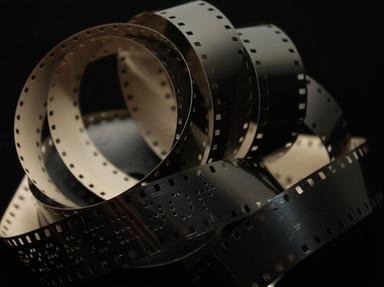Quiz Answer Key and Fun Facts
1. Let's begin with a genre question. If a film's objective is to shock, disgust or repel its audience, what genre is it most likely associated with?
2. Which of the following can generally be used as an example of non-diegetic material?
3. What is the difference between what the term 'long take' and 'long shot' refer to?
4. Alright, so who the heck is the 'best boy'?
5. What is a master shot?
6. Which of the following films is NOT paired with the movement it was a part of?
7. What is true of panning or tilting?
8. In three-point lighting, which of the following is NOT one of the lights used?
9. A theoretical discovery in the 1920's showed that an audience does not perceive individual shots separately from those around it, that in fact there are constant inferences made by the collision of images on the screen. An example of how this might work: a man's face is {shown;} cut to a shot of a woman storming out of a door with a {suitcase;} cut back to the exact same shot of the man's face. An audience seeing sequence would infer an emotional situation, probably that the woman is leaving the man (perhaps her husband?) and the audience would believe the man's face to be different the second time they see it even if it is the exact same shot printed twice in the film. What is the name by which this phenomenon is known?
10. What is looping?
Source: Author
rj211
This quiz was reviewed by our editing team before going online.
Any errors found in FunTrivia content are routinely corrected through our feedback system.


